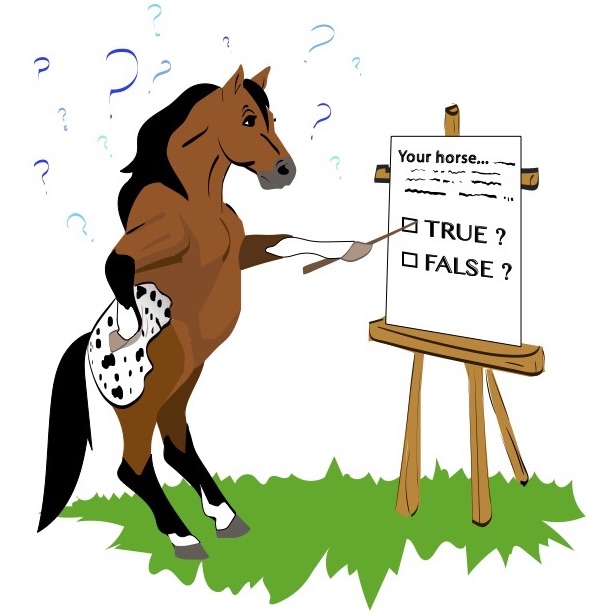
1. True or false: If your horse gets nervous, you can calm him simply by repeating, “Easy, boy,” (or “girl”) over and over.
T / F
2. True or false: Many seemingly hot horses are simply overfed and underworked.
T / F
3. If your pattern horse gets inexplicably nervous when he approaches the first cone, it’s likely because…
A) he doesn’t like the color orange, and most pattern cones are orange.
B) he’s anticipating kicks and tugs from you to “wake him up.”
C) he’s looking forward to the pattern and eager to get going.
4. True or false: To desensitize my horse to something, I must present it to him and keep the pressure on until he stops moving about.
T / F
HOW’D YOU DO? (Answers below.)
1. F is correct. No, the “Easy, boy” method won’t necessarily calm your horse unless your actions and body language reinforce the message. Research has shown that voice alone can’t help a horse as much as it might, say, a dog. For your horse, it’s less about your voice than how you’re interacting with him. (Learn more about this concept, including how to calm a horse at a show.)
2. T is correct. Rich feed can amp your horse up—they don’t call it “fat and sassy” for nothing. To keep your horse from the equivalent of a sugar high, make sure you balance the amount of feed he eats with the amount of work he’s doing. Unless you’re working him hard, a good-quality grass hay and a vitamin/mineral supplement may be all he needs to stay in good flesh and level temperament. (Can drug-free calming supplements also help? Check here.)
3. B is correct. As they approach the first cone, riders often begin adjusting their position and bumping with their legs or reins to get their horse’s attention. This causes nervousness because it teaches the horse to associate that first cone with “getting in trouble.” (Learn a better way to approach the first cone in your pattern class.)
4. F is correct. You don’t have to use that method. It will work, but a newer method that removes the pressure before your horse begins to feel fearful can work even better. With the newer method, your horse learns you’re watching out for him, which enables him to relax and get curious about whatever it is you’re trying to desensitize him to. It also strengthens the bond between the two of you. (Learn Warwick Schiller’s enlightened method of desensitizing a horse.)
Hey! Not already receiving H&R’s fun and informative newsletter? Sign up right now for The Ride.






